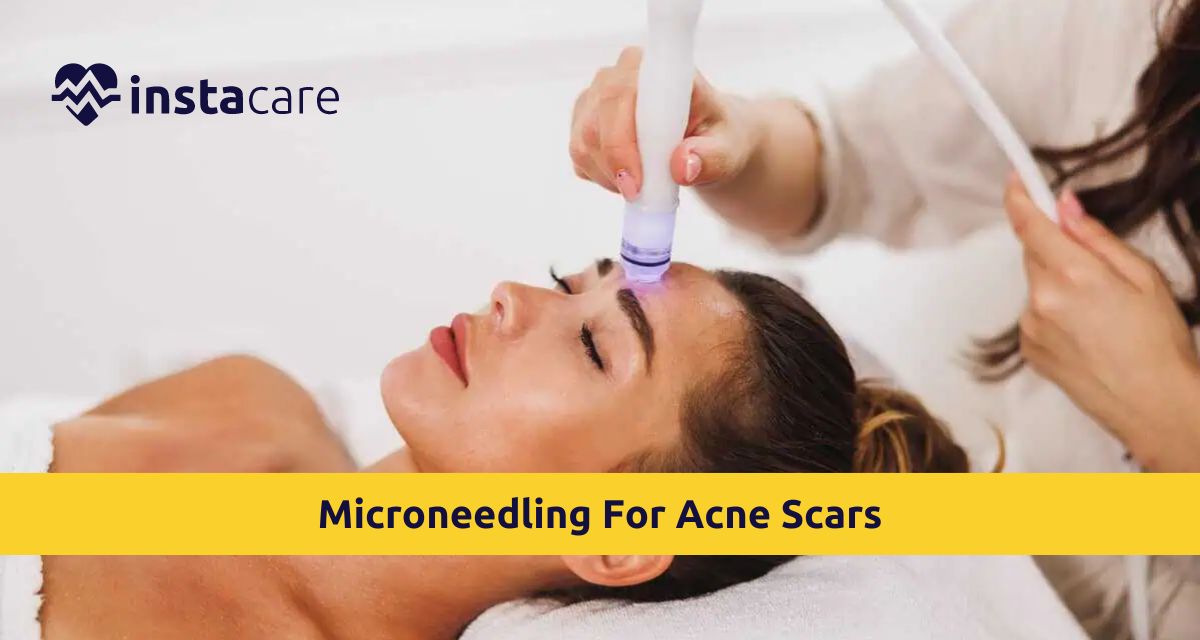Acne scars can be such a headache and bring down your
confidence. Microneedling has become a popular treatment in which you can
engage at the comfort of your home and is said to offer some incredible results.
Here is your guide to microneedling for acne scars.
What Is Microneedling?
Microneedling, also known as collagen induction therapy, is
a process in which your tiny needles are used to make small punctures on the
top layer of the skin. These minor injuries trigger the body's response to
healing processes, which include the growth of new skin that is fine and
smooth.
How Does Microneedling Work on Acne Scars?
The expected outcome of the therapy is that it helps remodel
the scar tissue. The punctures, on the other hand, brought about by the
microneedles, will encourage new skin cell growth, which will most of the time
even out the acne scar texture, making them less visible over time. The new
offshoot of collagen production, which microneedling encourages, has benefits
in general skin texture, appearance, tone, and elasticity.
The Science Behind Microneedling
The basic science behind this procedure is the body's
natural reaction to wound healing. When the skin is pricked by these
micro-needles, it assumes that it has suffered a wound. In response, the skin
cells start generating new collagen and elastin—the two proteins that
contribute to a large extent towards skin regeneration and healing. The
cumulative effect of this over several sessions is a significant improvement in
skin texture and a reduction in scar depth.
Value Added Benefits of Microneedling for Acne Scars
Better Skin Texture:
Microneedling will drastically improve the overall texture
of the skin, making it smooth. This will be helpful for those who have rough or
uneven skin from scarring.
Scar Reduction:
Results of microneedling indicated that acne wart marks
would be visibly reduced after several sessions. It has proven to be effective
for atrophic, hypertrophic, and even rolling scars.
Less Downtime:
It has a faster rate of recovery as compared to the other
aggressive treatments. Most people can continue with their day within 1 – 2
days after the treatment sessions.
Induction of Collagen Synthesis:
Collagen gives foundation tissues of firmness and is
necessary during the repair and regeneration of the skin. Collagen content in
the dermis has reduced with age.
Better Absorption of Skincare Products:
It boots the efficiency of top salon products. The micro-channels left in the skin enhance the penetration of the skincare products to
the skin.
Process of the Procedure
The real treatment procedure of microneedling lasts for around 30760 minutes. The person needs to get the topical anesthetic to make the procedure free of any pain. After this process, the microneedling device is used to roll over the desired area. After the process, redness and swelling might be observed, which are like a mild sunburn. How the procedure feels varies from person to person. Some patients may feel a slightly pricking feeling during the treatment, while some may find it more uncomfortable. But, the person doesn't feel great discomfort because numbing cream is used earlier.
After Care for Best Results
- Hydrate the Skin: Use gentle moisturizers to keep the skin in good hydration. Better hyaluronic acid-based products in helping the cause.
- Shield from the Sun: Shield from direct sunlight so that there are no problems with pigmentation using a broad-spectrum sunscreen of at least SPF 30.
- Use Your Products as Advised: You need to follow your practitioner's advice as per the stipulated time for the aftercare instructions. It may tell you to avoid certain products because of the irritation that the products may cause to the skin.
- Use Gentle Products: Avoid strong chemicals or exfoliators that may cause irritation. Stick to products with soothing components such as aloe vera or chamomile.
How Many Sessions Are Needed?
Usually, you may require 3-6 sessions at 4-6-week intervals
for best outcomes. The best results may not fully show unless several
treatments are done.
Potential Risks
Although microneedling is safe, certain potential risks are linked to it. You may experience redness, swelling, and some minimal bruising. Typically, these will resolve within a couple of days. Rare potential risks include infection, hyperpigmentation, and irritation. To reduce those risks, opt for a professional certified in such procedures. Be sure to inform your practitioner of any medical conditions and medications you are on as well. Some active acne or rosacea may have special considerations for treatment.
Is Microneedling Right for You?
Microneedling is a perfect skin treatment for all skin varieties. However, never perform microneedling on active acne, eczema, or, for that matter, infections. Severe skin conditions/enhancement at the sites or systemic conditions like psoriasis/lupus are also a contraindication. Whether or not microneedling is appropriate for your skin concern will best be determined by a consultation with a dermatologist. A professional will have a look at your skin and develop the best treatment option based on what suits your skin needs.
Microneedling for Acne Scars vs. Other Treatments
Although microneedling is one of the choices, a good number
of treatments exist for acne scars. Other treatments are laser therapy,
chemical peels, and even dermal fillers. All have their benefits and
drawbacks.
Laser Therapies:
They get to the scar tissue and destroy it with the help of
the focused light. While quite effective, laser therapy will usually be more
expensive and also take more time to recover from than microneedling.
Chemical Peels:
These are treatments within which a chemical solution is
applied to the skin, leading to the exfoliation and peeling off the skin. A new
skin layer then grows in place of peeled skin. Yes, it can be used to improve
skin tone and texture. This treatment might not be the best method for handling
deep acne scars.
Dermal Fillers:
Depressed scars are sometimes injected with fillers to
achieve an even skin look. This provides the results instantly but is
temporary, and one has to do topping after some time.
How to Choose the Best Treatment for You?
Appropriate treatment for acne scars is dependent on many
factors, including the type of scars in question, the severity of those scars,
skin type, and budget. A versatile and cost-effective option, often bringing
success stories, is microneedling. However, it may be necessary, in some cases,
to wear another treatment to get proper results.
Conclusion
Microneedling is a minimally invasive yet effective treatment of acne scars since it resurfaces the skin and reduces the visibility of the scar by causing a stimulus of collagen. In this light, you should always have your microneedling treatment carried out by a professional to ensure your safety and the best results. In summary: microneedling has a great appeal, from lowering to a minimum appearance of acne scars, to overall skin texture. With little downtime and a relatively low risk of side effects, it's an appealing option for people with an interest in overall skin texture. Always talk to a doctor about candidacy and the best personalized treatment plan.
Please book an appointment with the best Dermatologist in Lahore, Karachi, Islamabad, and all major cities of Pakistan through InstaCare, or call our helpline at 03171777509 to find the verified doctor for your disease.

